Complete Tour Guide System Buyer’s Guide
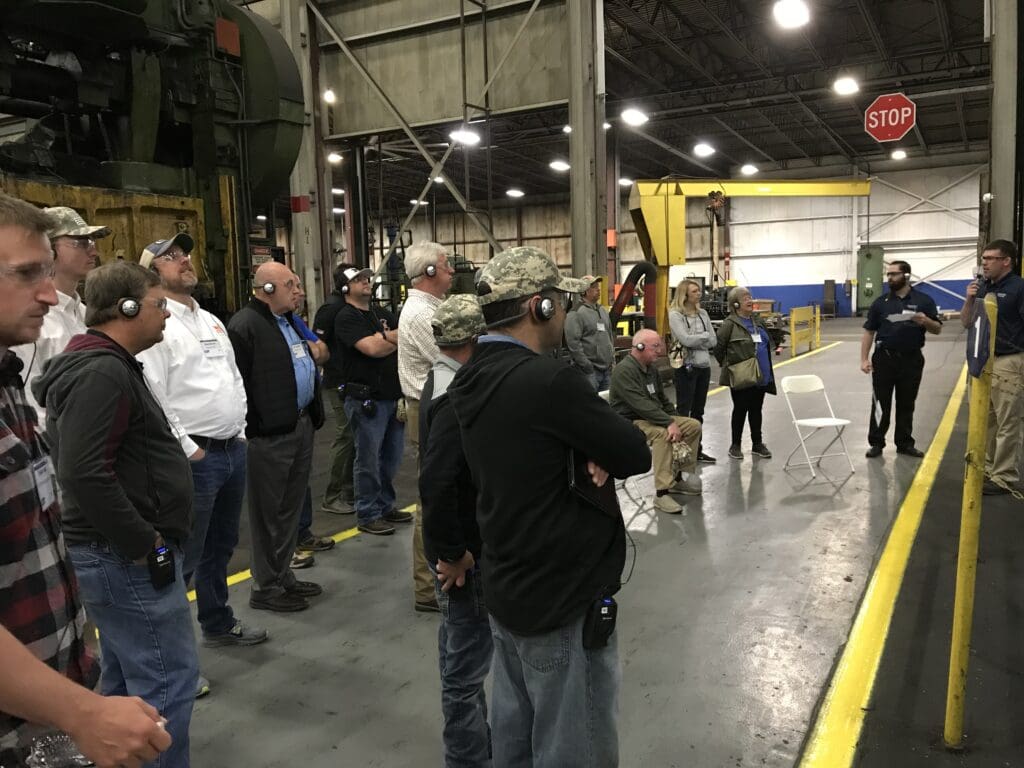
Why you need a high-quality tour guide system
When it comes to successfully conducting any guided tour, communication is critical. And one of the communication challenges that tour guides around the world face is dealing with noisy environments.
A tour guide system can help overcome this barrier by ensuring proper communication among all the participants. What’s more, there are different types of tour guide systems, and in this article, you’ll learn everything you need to know about this subject. From functionalities to things you should be looking for when buying or renting a tour guide system. We invite you to come with us and read this guide.
Things you need to know before buying a tour guide system
Before investing in a tour guide system, it’s important to understand the basics and what your options are. So below is a breakdown of some tour guide system essentials:
- What it is
- How it works
- Where and how you can use one
- What you should consider when making your purchase
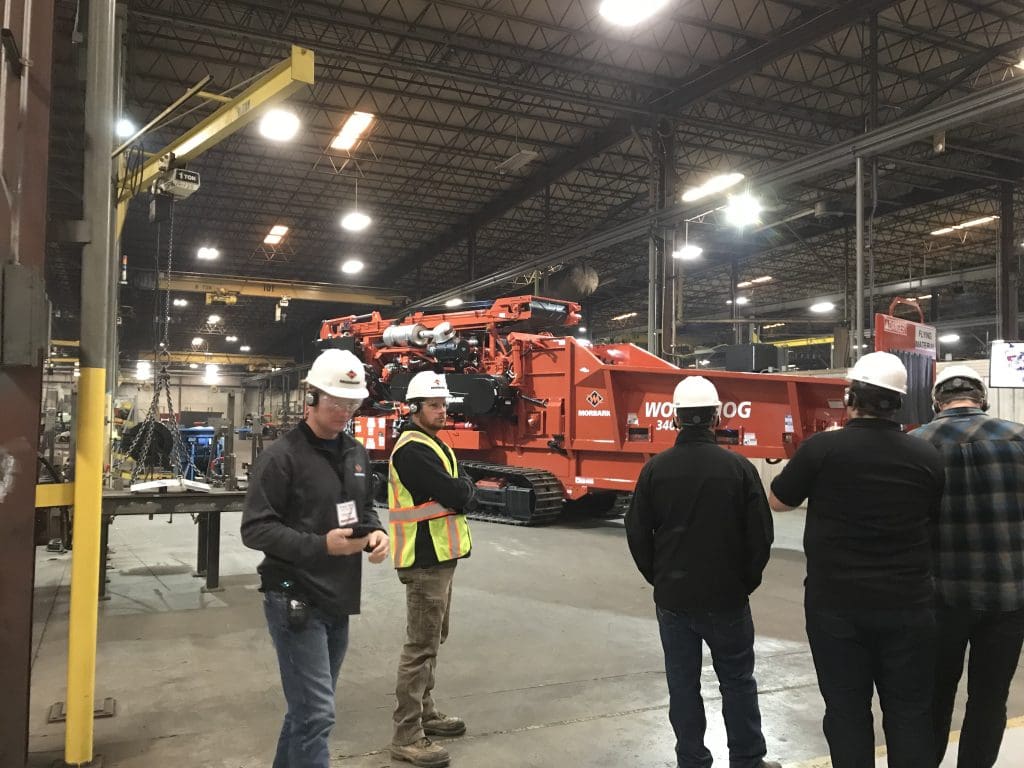
What is a Tour Guide System?
A tour guide system is a portable analog or wireless system that facilitates easy and clear communication between a group of people. It includes a number of technical components:
- Headset or earphones
- Built-in wireless or handheld microphone
- Transmitter & Receivers
- Transceiver
- Other accessories
The clear sound, audio quality, and ease of use allow you to conduct a group tour without being distracted by your surroundings.
A tour guide system also ensures that you don’t disturb anyone that’s not in your group by speaking too loudly. And, depending on the type of tour or activity you’re looking to conduct, analog and wireless tour guide systems are available for both one-way and two-way communication.
One-way Communication
One-way tour guide headsets allow the guide or group leader to maintain clear and high-quality wireless communication with their group throughout the tour or event. With this option, members of the group can listen and follow the tour but they can not communicate back.
One-way communication is therefore common when conducting tours for larger groups or hosting large-scale events and presentations where the focus is on the speaker.
Two-way Communication
Two-way tour guide headsets allow for both the guide and anyone in their group to actively communicate back and forth. Anyone with a headset can ask questions, give feedback, and generally contribute to the tour and/or event whenever necessary.
Two-way headsets are primarily used with individual and small group tours, training programs, and other events that promote interactivity.
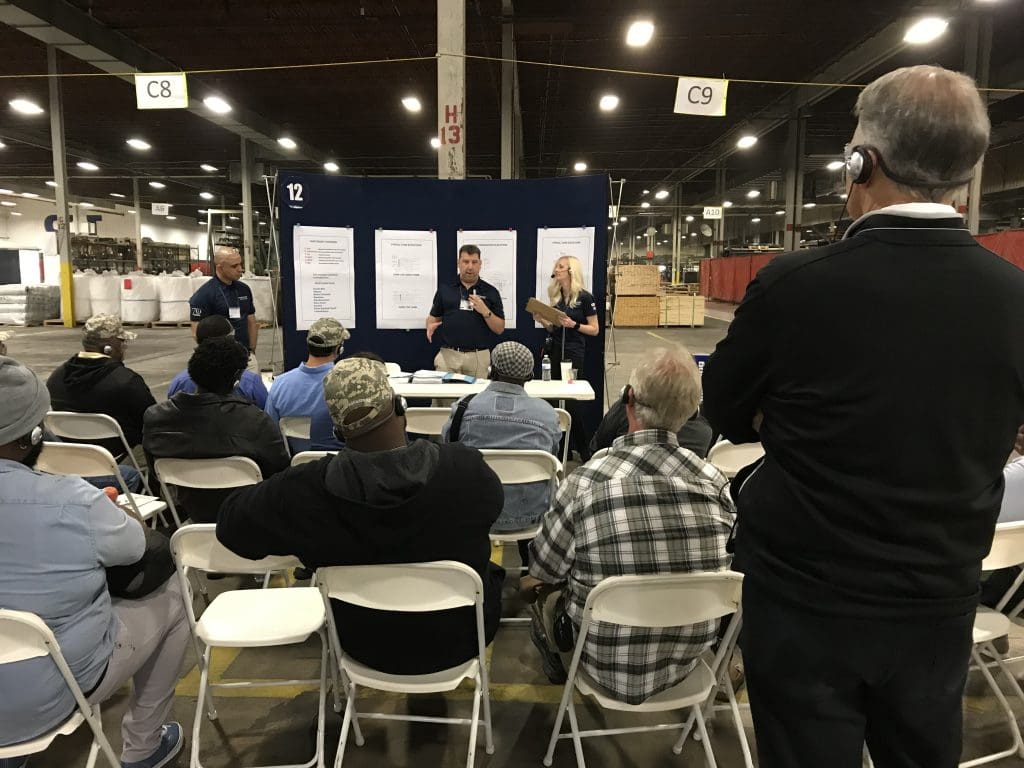
How does a tour guide system work?
The components that make up a tour guide system are fairly straightforward and simple to use. They’re lightweight, portable, and easy to store away and transport. And they can be used in a number of different environments. Here’s a detailed breakdown of how a tour guide system works.
Transmitter
Transmitters allow the speaker’s voice to be carried to the listeners wirelessly via radio waves. A user speaks into a handheld or built-in microphone, and the transmitter ensures that they are heard, in real-time, through the listener’s earphones or headset.
You have a few options when it comes to transmitters. All of them are lightweight, durable, rechargeable, and portable. They can easily fit into pants or shirt pocket. However, we recommend that you avoid using lanyards for transmitters — or any other equipment — as these can be unsafe.
Microphones
Tour guide systems can come with both handheld and hands-free mics. Handheld microphones are generally used for events like Q&A sessions, delivering info during tour stops, and larger-scale presentations.
You also have the option of a smaller wireless mic. This is handy in case you need to easily pass the mic around during a tour, training session, or presentation.
And a hands-free microphone built into your headset is a good option for fast-paced environments, more active tours, and other settings where you might need to use your hands.
Headsets Or Earphones
You have a few options when it comes to listening too. Both headsets and earphones allow you to listen to and follow the tour guide, trainer, and any other group participant throughout the tour with ease. And both offer clear, high-quality sound.
Wireless headsets with built-in microphones are a good option for staff communication, interactive tours, and training sessions.
Meanwhile, wireless earphones can be very useful if you need to take up minimal space. They also come in handy in areas where hard hats and other safety equipment may be required.
Transceivers And Receivers
Transceivers and receivers are vital for sending and receiving data from the microphone and transmitter and delivering that data to the headset system or earphones. This is essentially how the group is able to communicate.
The transceiver allows for both listening and speaking, and it usually comes as a separate, portable unit. It’s ideal for interactive tours, staff communication, and training sessions.
The receiver only allows for listening, so it’s better for simpler, one-way guided tours. The receiver may be built into the earpiece/headset, or come as a separate piece as well.
What you choose depends on the type of tour you’re looking to give. Portable transceiver and receiver units are lightweight, easy to manage, and can be carried on a belt or inside a small pocket.
Charging Stations And Cases
Since the entire communication system is portable, it relies solely on batteries and chargers. For example, most portable transceivers and receivers run on a lithium battery. But the battery itself is easily rechargeable. And so is the audio guide system as a whole.
Plant Tours’ wireless headsets can last for at least eight hours with one full charge. To recharge them, simply place the lithium batteries in their case (aka their charger), leave them overnight, and they’ll be ready for use the following day.
Charging stations ensure that your equipment will always have the battery life needed to perform. This is especially helpful when it comes to unscheduled and unplanned tours or activities.
And a slick, suitcase-style storage case is a reliable way to safely store and transport your whole tour guide system — from headsets, mics, and transceivers to batteries and charging stations.
What to look for when buying a tour guide system
These are the 5 main aspects to consider when purchasing a Tour Guide System:
- Range
- Microphone
- Headset or Earphone
- Transceiver and Receiver
- Charging Cases and Stations
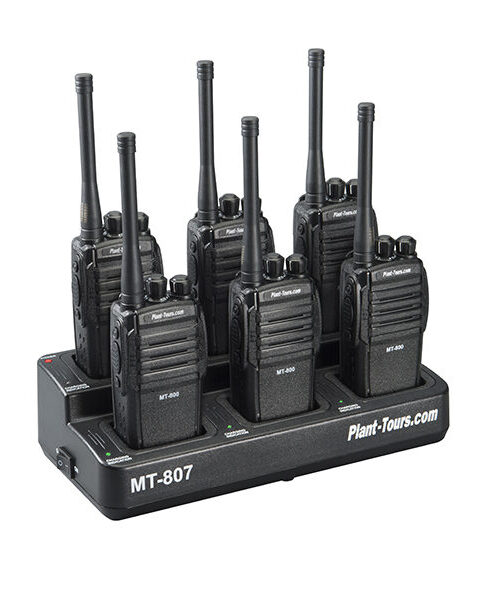
The main components to consider
Range
Frequency range is a vital factor when it comes to communication. Most factories and other large facilities will usually already have some sort of group communication system in place, such as walkie-talkies, PA systems, and/or LCD screens. But these can be limiting — especially with high levels of noise and visual obstructions.
Plant Tours’ MT-800 Digital Transceiver has a frequency band of UHF 400-480 Mhz, while the Two-Way MT-700 Analog Transceiver has a frequency of UHF 430-480Mhz. So the average range of Plant Tours headsets is around 150 feet. But the frequency range depends on a number of factors — the environment, man-made or natural obstructions, wifi, etc. In a relatively open area, your tour can be heard with ease at approximately 1/3 of a mile away. So you can be confident that you can effectively communicate with your entire team or group over relatively long distances.
Batteries
Battery options are fairly simple and straightforward with tour guide systems. You basically want something small, light, easy to use and recharge, and with a long-enough lifespan to feel confident throughout your tour.
Plant Tours offers heavy-duty, industrial-use, rechargeable Nickel Metal Hydride (NiMH) batteries that have a lifetime of 1+ years and a run-time of 8-14 hours. These are generally used for devices like handheld mics. For our two-way system transceivers and receivers, we use the MT-205 Replacement Lithium-Ion Battery. And for staff communication, more lengthy tours, or other critical activities, we offer the MT-205XL (to be used with our MT-700 transceiver). You can talk to one of our representatives to learn more about the individual benefits of each type of battery.
Noise Reduction Capabilities And Interference
Noise reduction and cancellation options are also key points to consider, especially for factory and plant tours. Depending on the level of noise, the right headsets and earphones can both improve your tour and help protect your and your group’s overall health.
Plant Tours offers a number of headphones options to help mediate and reduce noise levels. These high-quality listening devices are lightweight — between 0.9 to 12 oz. And their sleek, compact, portable design makes them perfect for any work or tour environment.
Interference, on the other hand, doesn’t always just mean noise. There are countless factors that can hinder communication during an event. Connectivity, distance, physical obstacles, other waves within a facility — all this can affect your tour or activity. Furthermore, accidents happen. In a busy and hectic environment, equipment may get tangled, dropped, obstructed, and so on.
Plant Tours’ communication systems are generally small, compact, easy to use, and designed to withstand a fall and deal with most interferences. But make sure you have a thorough understanding of all the things that might affect your particular tour before deciding on a system.
Multiple Channels
With multiple channels, you can also accommodate more than one group simultaneously. Having multiple channels can help you avoid miscommunication and crosstalk. And you can also assign individual channels to group members — and thereby diversify your tour or event in a number of different ways.
Plant Tours’ analog two-way systems provide up to 16 channels, with a 462 MHz frequency range. So, for example, with our staff communication systems you can use any of these channels for a clear conversation between members of your work team at a distance of up to a third of a mile. Or if your tour group is international, you can set up a separate language interpretation channel. A language interpreter can then give a simultaneous interpretation of your tour in real-time and without interfering with its original content. This will ensure that everyone in your group is on the same page.
There are countless benefits to using a multiple-channel system — whether it be in a manufacturing facility, a museum, a business conference, an adventure tour, or anything in between.
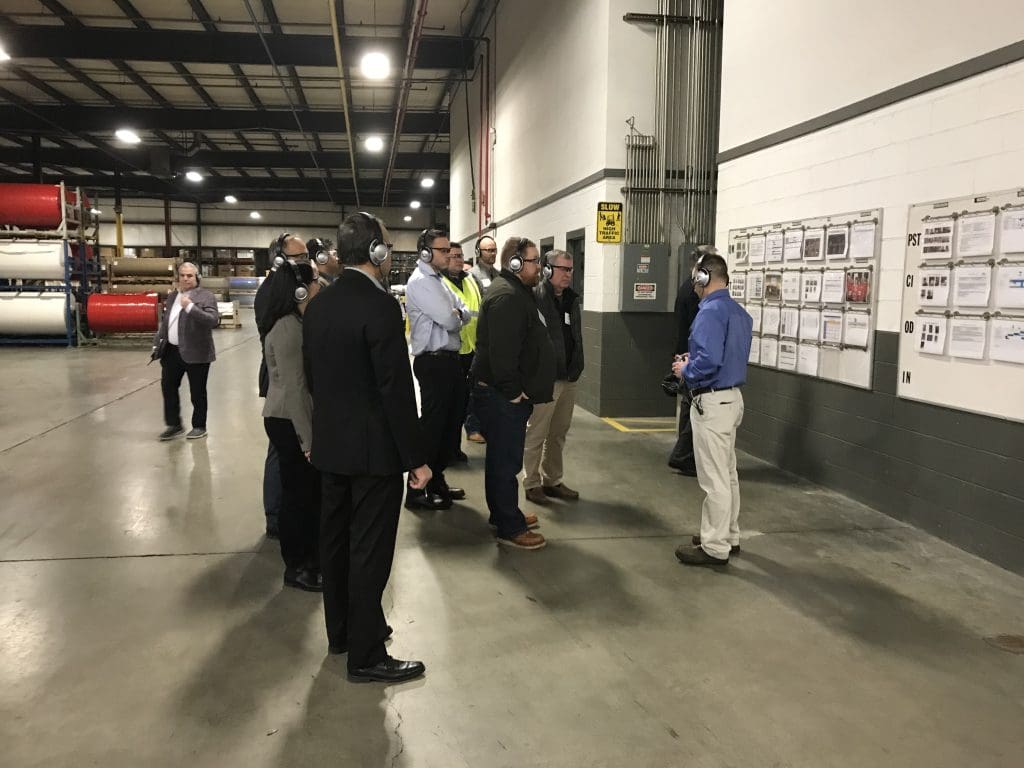
Tour guide system applications
With a good tour guide communication system, you can conduct effective, high-quality group tours — and various other events — almost in any environment and setting.
Factories Or Plant Tours
Factory and plant tours, Gemba walk, work training programs, and various business events can benefit greatly from both one-way and two-way communication headsets for factories. You can make sure that you and your colleagues stay focused and hear each other loud and clear without worrying about background noise or other distractions.
Business Events
Sometimes business events take place in noisy environments. Using a tour guide system can be crucial to delivering the right message at the right time to your stakeholders during a business event.
Museum Tours
When conducting gallery and museum tours, you can avoid raising your voice and disturbing other patrons but also make sure that everyone is following the tour. City tours can be conducted worldwide, in a number of languages, without the hustle and bustle of the city impeding your tour’s audio quality.
Real-time Translation And Interpretation
Tour guide systems can also help with real-time simultaneous translation and interpretation services at events like international conferences or during multilingual tours and events.
City Tours
All sorts of adventure, nature, hiking, and city walking tours can be more organized, inclusive, and satisfactory for all group members — regardless of distances, walking speeds, or sizes of the group.
Assistive Listening
Furthermore, assistive listening and other audio services can be provided for the hearing and/or visually impaired — at any time, anywhere, with relative ease.
School Tours
College, university, and school tours can be made more fun, unique, and educational: both teachers and students can feel more engaged with the clarity and interactive possibilities a tour guide system can offer.
Tour guide systems for sale or rent
Plant Tours offers a variety of tour guide systems to meet all your individual needs. Once you know what you’re looking for, you can either buy or rent a system that’s best for you.
TRY A PLANT TOURS DEMO KIT
Before you make a final decision, you also have the option of testing out all our equipment absolutely free of charge. We’ll deliver a Free Demo Kit to your place of business so you can experience its many benefits firsthand.
The free kit comes completely sanitized and includes every radio, headset, and microphone in our exclusive product line. There’s zero obligation and you have 30 days to carefully test and evaluate to determine which system is best for your specific requirements. Test it out, weigh your options, see what works best for you and your operation, and we will confirm your preferences and order.
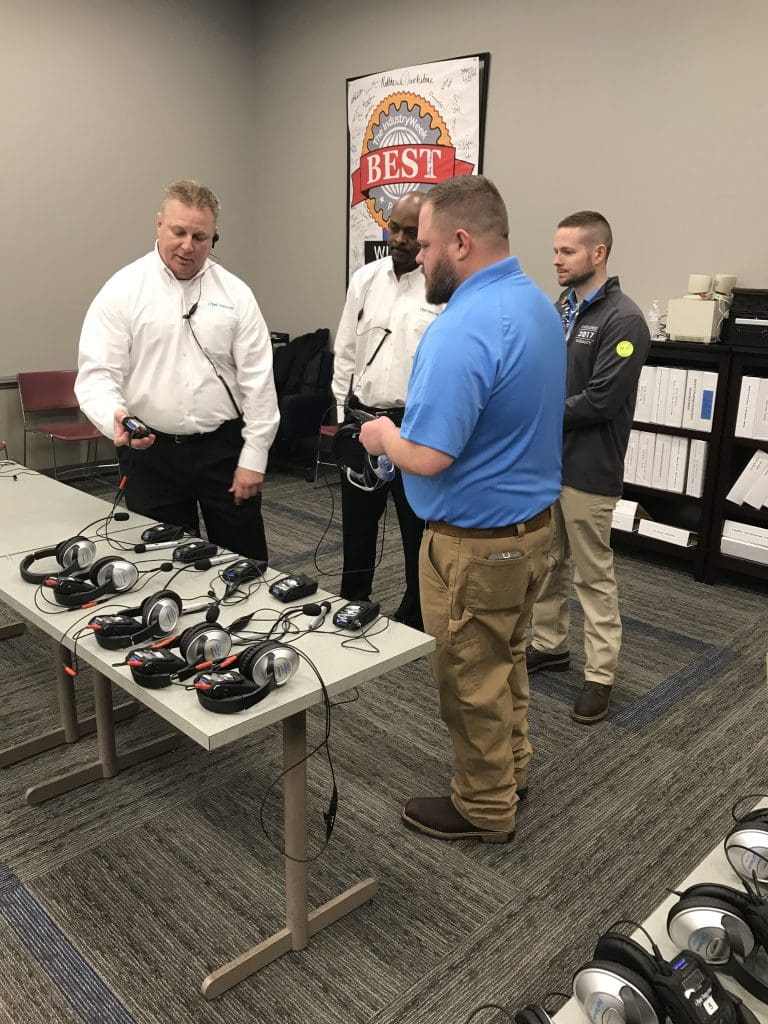
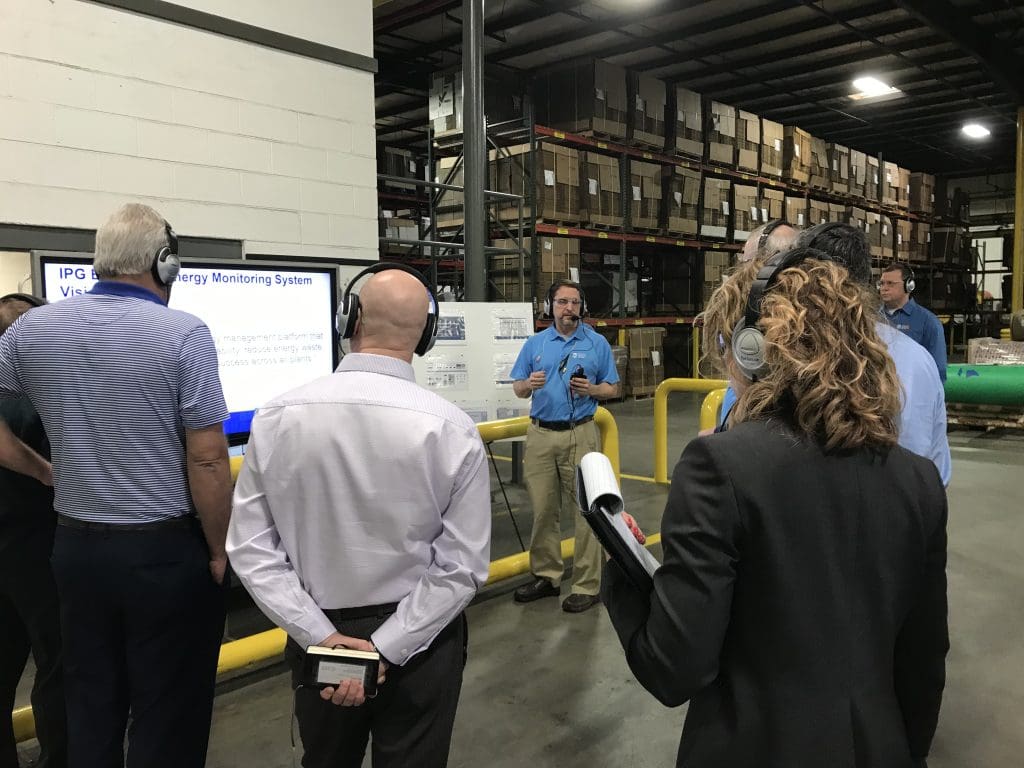
What's the best tour guide system for me?
The various components of our one-way and two-way tour guide systems are designed to provide you and your group with the best possible interactive experience. The system you choose depends on the type and size of tour or activity you want to conduct, as well as the environment you plan to conduct it in.
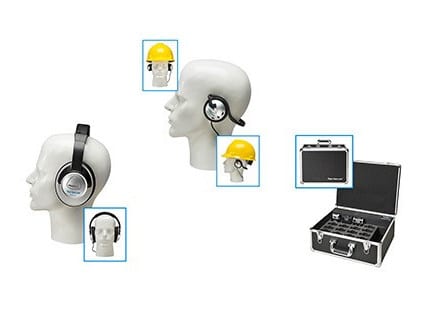
ONE-WAY COMMUNICATION SYSTEM
Many manufacturing facility and plant tours are guide-driven. It’s more important for the group to follow and hear the speaker clearly than to be heard. So if you’re looking to conduct generally speaker-oriented tours and activities, you can explore our transmitter, microphone, and charging case options. These one-way systems help you maintain control and flexibility, guarantee audio clarity, and ensure the guide’s control of the group. But they also allow for the occasional Q&A session too.
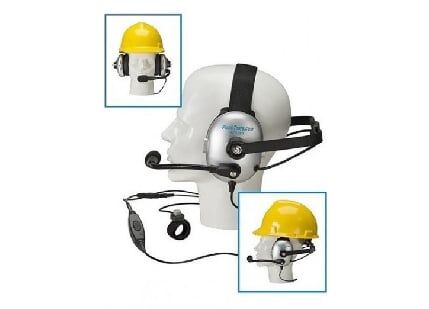
TWO-WAY COMMUNICATION SYSTEM
If you’re conducting a staff meeting, a business conference, work-training, or an on-site safety training meeting, then you’ll likely want to opt for our two-way communications systems. The two-way communications systems can also be helpful with various types of interactive and large group events — from museum tours to city or nature walks, from sporting events to school and university sessions, and so on. With these, all members of your group can contribute to the overall experience.
